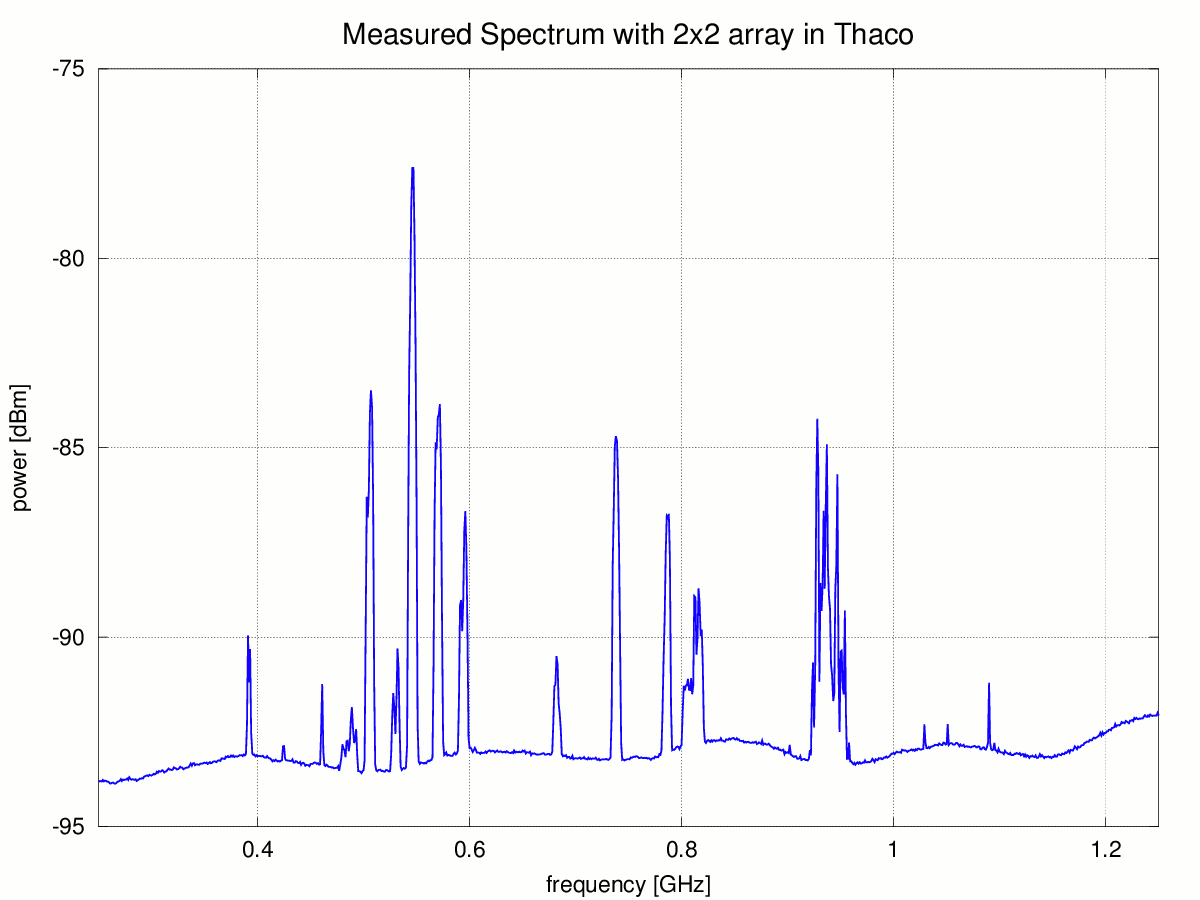Daily Image
13-04-2015The Wideband Low Noise Tile - The effect of RFI on noise measurements
| Submitter: | Bert Woestenburg, Roel Witvers |
| Description: | A recent AJDI (23-03-2015) shortly mentions the influence of RFI on the design of the WLNT and on noise measurements at specific RFI frequencies. Obviously RFI in the 500 MHz to 1500 MHz frequency range (even at 20 dB below the system noise level) will deteriorate the measured noise performance at the RFI-frequencies. Strong RFI may even render measurements impossible. As long as the RFI-levels do not drive the receiver into saturation, the solution is to ‘flag’ the affected frequency bins and ignore them in further processing. However, due to the inherent non-linearity of receiver systems, RFI may produce intermodulation products at other in-band frequencies. Although these intermods will be at a much lower level than the original RFI-frequencies, they may still influence the noise measurements. In particular second order products in wideband systems like the WLNT may have a large impact. To keep their effect on noise measurements to below 1%, the intermods should remain at least 20 dB under the system noise level. Based on the properties of our WLNT receiver system (gain, second order intercept point) and measured RFI-levels at the measurement site (see the RFI-spectrum on display), we calculated the levels of in-band intermodulation products for RFI-signals below 1000 MHz. As an example the total power plot shows the expected intermodulation products between 1220 MHz and 1270 MHz (lower, magentic line). Also shown is the output spectrum (upper, blue line) of the 2x2 array looking at broadside. Notice that the calculated intermods are between 10 and 15 dB below the system noise level and will influence the noise measurement. Some in-band signals are visible in the blue line, as well as a noisy structure and a spike above 1250 MHz. The noise temperature plot clearly shows the effect of the in-band signals on the measured array noise temperature (blue line). It also shows a considerable increase in noise temperature due to intermods between 1230 and 1240 MHz. In our WLNT-receivers the last amplifier stage sees the largest RFI-levels and thus will be dominant in the production of intermods. One may illustrate the effect of the intermods on the noise by reducing their level, either placing a 6 dB attenuator or a bandpass filter before the last amplifier stage. This will reveal which signals are due to intermodulation and which are original in-band signals. Indeed the total power spectrum plots (red line with filter and green line with attenuator) show a much cleaner and flatter response. At the same time the noise temperature plots at frequencies where the intermods occur show a considerable improvement with the attenuator and filter, while at in-band RFI-frequencies noise peaks remain. These results explain the anomalies in noise temperature at certain frequencies that we found in previous measurements and underline the importance of an optimally dimensioned RF-chain. |
| Copyright: | ASTRON |
| Tweet |  |
